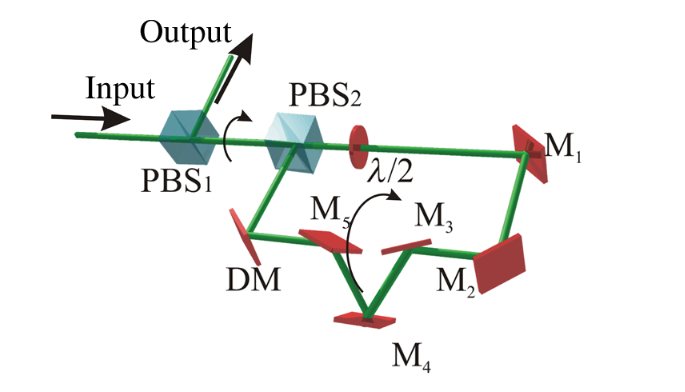'Smoothed' light for directly imaging exoplanets

Physicists of MIPT (Moscow Institute of Physics and Technology) and the Space Research Institute of the Russian Academy of Sciences have developed optical technology for the "correction" of light coming from distant stars, which will significantly improve telescopes and enable direct observation of exoplanets. Their work has been published in the Journal of Astronomical Telescopes, Instruments, and Systems (JATIS).
The first exoplanets, which planets detected outside our solar system, were discovered in the late 20th century, and we have now detected more than 2,000. It is almost impossible to see the faint light of the planets themselves without special tools because it is saturated and "overshadowed" by the radiation of parent star. Therefore, exoplanets are discovered by indirect methods: by detecting the weak periodic fluctuations in the luminosity of the star when a planet passes in front of its disk (the transit method), or by spectral translational vibrations of the star itself from the influence of the planet's gravity (the radial-velocity method).
Recently, astronomers were able to directly obtain images of exoplanets for the first time. So far, 65 such images have been taken. To obtain them, the scientists use stellar coronagraphs first created in the 1930s for observations of the solar corona outside eclipses, known as solar coronagraphs. These devices have focal masks—"artificial moons" inside them which block some part of the field of view—ultimately, it covers the solar disk, revealing the dim solar corona.
To use this technique for stellar observations requires a much higher level of accuracy and a higher resolution telescope that accommodates a coronagraph. The apparent size of the orbit of Earth-type planets nearest to us is about 0.1 arcseconds. This is close to the resolution limit of modern space telescopes (for example, the resolution of the Hubble space telescope is about 0.05 seconds). To remove the effects of atmospheric distortions in ground-based telescopes, scientists use adaptive optics—mirrors that can change shape while adjusting to the state of the atmosphere. In some cases, the mirror shape can be maintained with an accuracy of 1 nanometer, but such systems do not keep pace with the dynamics of atmospheric changes and are extremely expensive.

A team led by Alexander Tavrov, an associate professor at MIPT and the Head of the Planetary Astronomy Laboratory at the Space Research Institute of the Russian Academy of Sciences, has found a way to obtain the highest resolution while using relatively simple and inexpensive systems of adaptive optics.
The researchers used the idea of an "extremely unbalanced interferometer" (EUI) proposed by one of the article's authors—Jun Nishikawa, a Japanese scientist working at the National Astronomical Observatory of Japan. Conventional interferometry combines the waves with approximately equal intensity into a single wavefront to produce a clear, sharp image. The EUI light is divided into two beams (weak and strong), whose amplitudes have an approximate preset ratio of 1:10. A weak beam passes through the adaptive optics system, after which the two beams are recombined and interfere with each other. As a result, the weak beam "smooths out" the light of the strong beam, which can significantly reduce the distortion of the wavefront and the contribution of stellar speckle patterns (a random interference pattern).
"Through the use of a relatively simple optical set-up, we can obtain the image contrast at the quality necessary for the direct observation of Earth-type planets by means of coronagraphs. Of course, compared to foreign developments, our system requires a more complex control technique, but at the same time, it is much less dependent on the temperature stability that greatly simplifies its operation in space," team leader Alexander Tavrov says.
With the help of computer simulation, they have determined approximate characteristics of the system. According to calculations, the resulting scheme provides the image contrast of about 10-9. Furthermore, it was demonstrated that EUI shows achromatism, i.e. the reduction of aberrations with increasing wavelength.
In the future, scientists plan to create a laboratory prototype and perform a number of experiments. As Alexander Tavrov notes, "We want to see the distant worlds through a telescope, but it implies that the distant worlds might see us as well. Advanced technology—within 50 to 100 years—could be enough to do it many times more precisely than we are able to do it now."
More information: Inna Shashkova et al. Extremely unbalanced interferometer for precise wavefront control in stellar coronagraphy, Journal of Astronomical Telescopes, Instruments, and Systems (2015). DOI: 10.1117/1.JATIS.2.1.011011
Provided by Moscow Institute of Physics and Technology





















